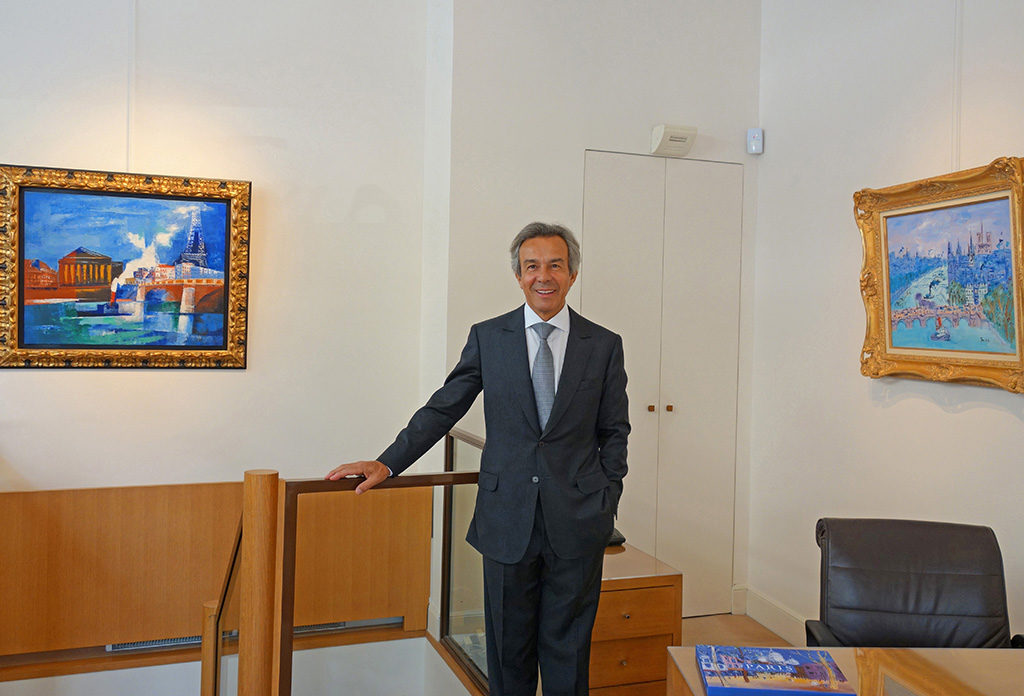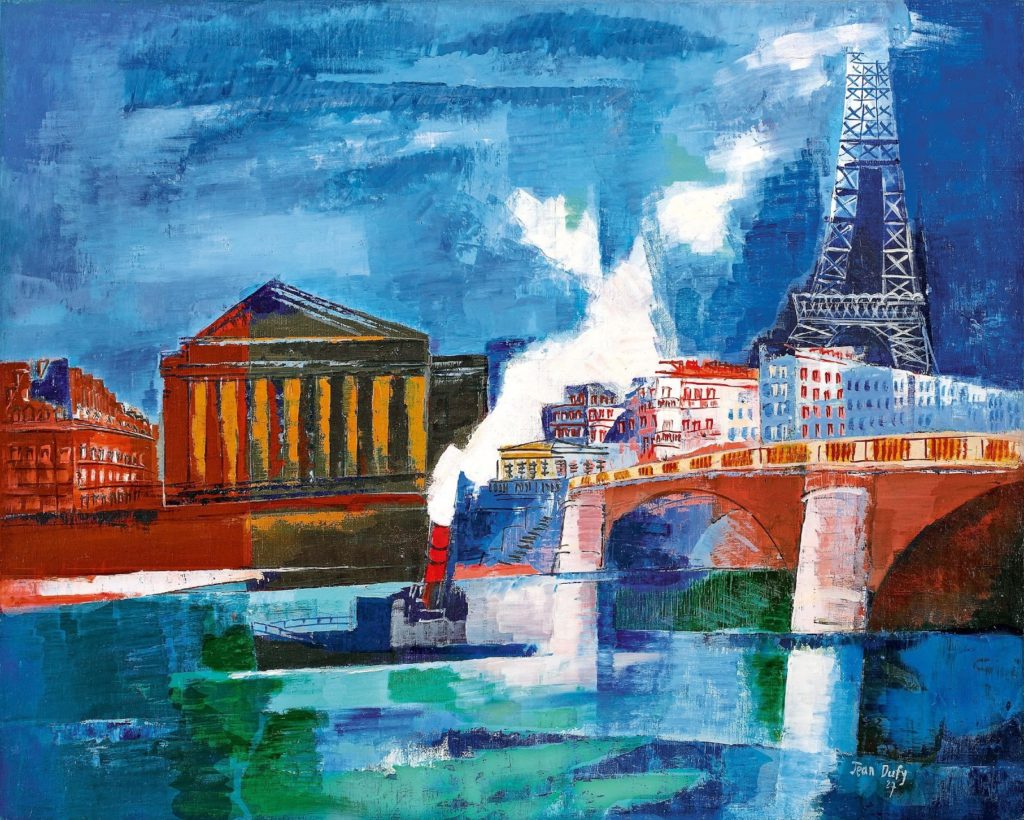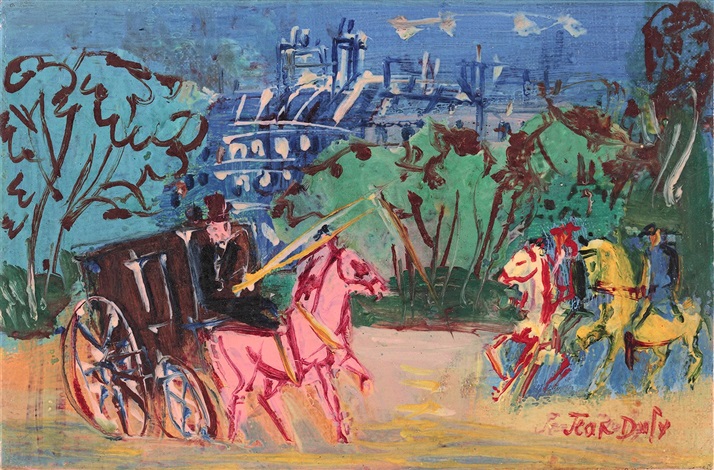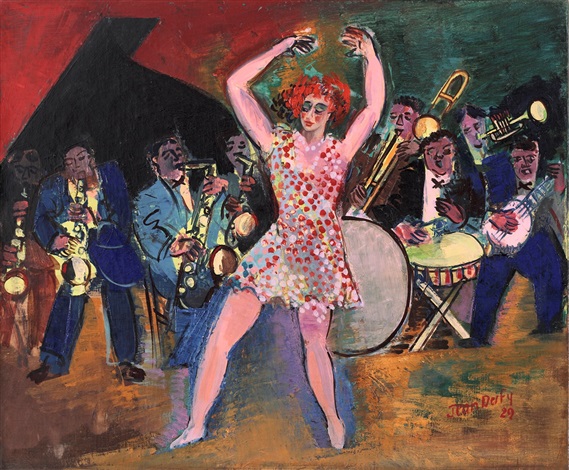Dealer Jacques Bailly on Why A French Art Deco Painter’s Ebullient Paris Street Scenes Still Delight Today


Artnet Gallery Network

For nearly half a century, painter Jean Dufy’s effervescent scenes of the Paris life have beguiled dealer Jacques Bailly. He describes the artist’s energetically colorful paintings as “synonymous with joy and happiness.”
Bailly has had some time to consider just what it is he likes about them. He opened his eponymous gallery in 1973, showing an eclectic roster of mainly French artists including André Masson, Jacques Villon, and Dufy, intermittently branching out with exhibitions of street artists like Basquiat and Keith Haring. But over the decades his fascination with Dufy’s oeuvre has only continued to blossom.
The preeminent authority on the painter and the holder of his archive, Bailly is currently working with Dufy’s family to complete a definitive catalogue raisonné. Recently we chatted with Bailly about how he fell in love with the artist and why his scenes of early 20th century Paris still capture the imagination of viewers even today.

Jean Dufy, Eiffel Tower (1927). Courtesy Galerie of Jacques Bailly.
You have been the longtime dealer of Jean Dufy. How did you first come across his work?
When I opened my first gallery in 1973, I was interested in the Paris School and I exhibited artists such as Bonnard, Marquet, Utrillo, and Vlaminck. At the same time, I had the chance to meet Germaine Dufy, the sister of Jean Dufy and his closest living relative. This meeting was incredibly decisive for me.
At her home was a photo library of the works made by Dufy during the 1930s. These works were a revelation to me. I immediately decided to devote myself to bringing Jean Dufy’s work a larger public and grant it the recognition it deserved. I had to return him the place he had at the beginning of the 20th century.
In the years since, you’ve become the preeminent authority on his work. What have been the special moments or achievements of this research?
Jean Dufy’s archives were given to me by his family. Having the archives allowed me to devote myself to writing the catalogue raisonné of his work (Volume I and Volume II have already been published, with one more to complete).
During this process I rediscovered so many aspects of his work. Since then other publishers including Editions Hazan and Magellan & Cie have published monographs on his work as well, bringing knowledge of his work to a wider audience. Nowadays, there is always a selection of Dufy’s best works on view at the gallery for anyone who is interested to enjoy.

Jean Dufy, Calèche et cavaliers (ca.1950). Courtesy Galerie Jacques Bailly.
Do you have a favorite work of his?
One of my favorite paintings is his Eiffel Tower painted in 1927. It is treated with boldness both in architecture and rhythm as well as in treatment and flatness of colors that foreshadows the work of some painters of the 1950s. I am thinking here specifically of Nicolas de Staël.
Why do you think, almost a century after many of his paintings were created, his work is still appealing to you?
His paintings both seduce and amaze me because they are always synonymous with joy and happiness. These qualities shared by most collectors of his work as well.

Jean Dufy, Au cabaret (1929) Courtesy Galerie Jacques Bailly.
You’ve been working in this field for nearly 50 years. Since you started, what have been the biggest changes in the gallery market?
Well, in 1985, I bought large-scale paintings by Jean-Michel Basquiat and Keith Haring and exhibited them at the gallery for six to eight months at a price of $20,000 each. Nobody was interested in buying them. Now, 34 years later, I think that visitors and buyers would be flooding the gallery.